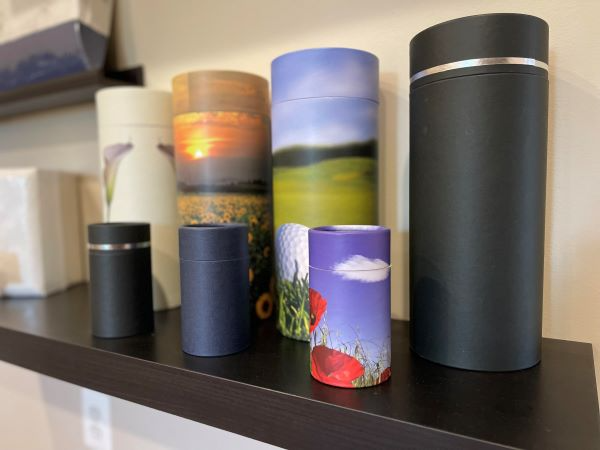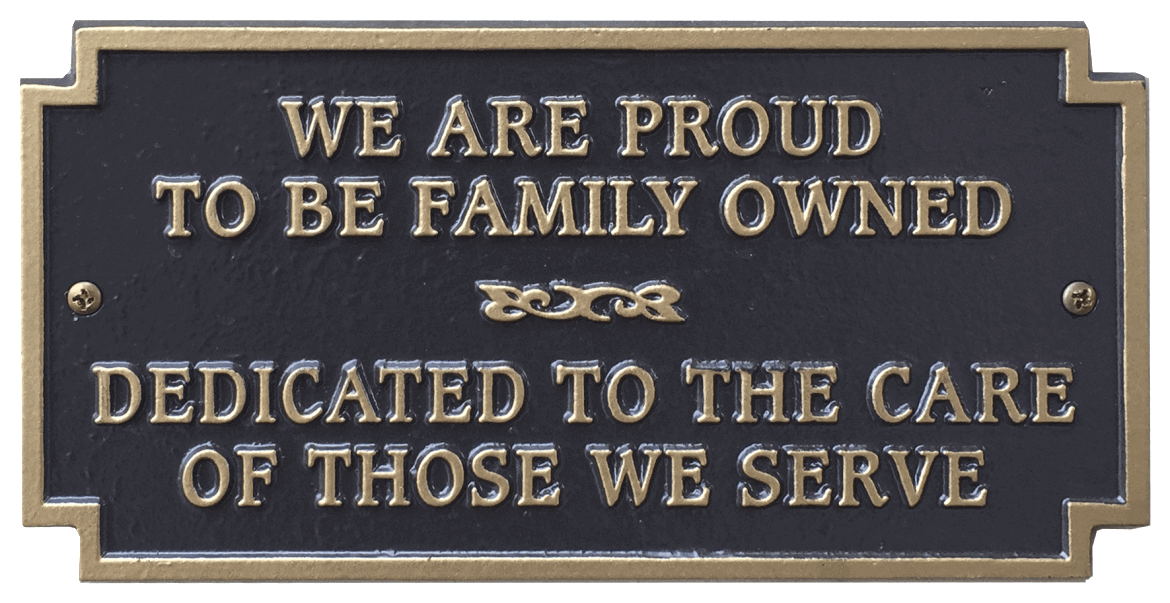Ash Scattering Services
Meaningful Ash Scattering Services and Guidance
After deciding to cremate a loved one, many families ask for help on how to scatter the ashes in a place that has special meaning to them. At Tussey-Mosher Funeral Home in Wellsboro, PA, we know that choosing the right final resting place for your loved one's ashes is a very personal choice that needs to take into account both the law and what the family wants.
Our knowledgeable staff can help you choose the best way to scatter ashes, whether it's at a private family ceremony in a local natural area or with our professional ocean scattering services off the coast of Key West, Florida. We help families understand the rules, plan meaningful ceremonies, and make sure that their loved one's last journey is done with respect and dignity.

Understanding Cremated Remains and Scattering
What Are Cremated Remains?
Cremated remains, often called "ashes," actually consist primarily of bone fragments that have been processed into a sand-like consistency. The remains are typically grayish-white in color and have a texture similar to coarse sand or fine gravel. Understanding the physical nature of cremated remains helps families make informed decisions about scattering methods and locations.
Benefits of Ash Scattering
- Meaningful Connection: Choosing a location that held significance to your loved one creates a lasting connection to their memory
- Natural Return: Allows your loved one to become part of a natural environment they cherished
- Flexibility: Can be done immediately after cremation or years later when the time feels right
- Multiple Locations: Portions can be scattered in different meaningful places
- Ceremony Options: Can include formal ceremonies or intimate family gatherings
- Cost Effective: Generally less expensive than traditional burial or columbarium placement
Legal Guidelines and Regulations for Ash Scattering
Private Property Scattering
When you want to scatter cremated remains on private property, the rules are very different depending on who owns the property. You can scatter cremated remains on your own property without getting special permits or permission from any government agency. But if you want to scatter on land that belongs to someone else, you must get written permission from the owner before you can have the ceremony. To avoid any legal problems that might come up later, we strongly suggest getting a signed and dated document from the property owner. Another option is private cemeteries, many of which have set up scattering gardens just for this purpose. It's a good idea to ask the cemetery management directly about their rules, any restrictions on ceremony elements, and any fees that may apply.
Public Land Requirements
When you want to scatter cremated remains on public land, you have to follow different rules depending on where you are and what type of land it is. Most state and local parks require families to get special permits for ceremonies where they scatter ashes. This is why it's important to call the park's administrative office well in advance of your planned ceremony to find out what they need and get all the permissions you need. National parks usually have strict rules and procedures for getting permission to scatter ashes.
Families should get in touch with the chief park ranger directly to ask for written permission and get specific instructions about where in the park they can hold the ceremony and any rules about when it can happen or what elements can be included. Public lands that aren't controlled usually have fewer rules, but families should still use common sense and be environmentally responsible by staying away from busy areas and staying at least 100 yards away from public trails, roads, and developed areas where other visitors might be disturbed.
Water Scattering Regulations
There are a lot of complicated federal and local rules about water scattering that depend on the type of waterway. The federal government has strict rules for ocean scattering. For example, the ceremony must take place at least 3 nautical miles from any shoreline, and the Environmental Protection Agency must be told in writing within 30 days of the ceremony. To protect marine ecosystems, only biodegradable items like natural flowers or biodegradable urns can be used during ocean ceremonies.
The Clean Water Act covers the scattering of inland water on rivers and lakes. Local environmental agencies may have their own rules or requirements, so it's important to check with the right people before going ahead with any ceremony. Families should get permission from the owners of private waterways like ponds or streams on their property. They should also think about any effects on the environment or people downstream.
Ash Scattering Techniques and Methods
Air Scattering
- Wind Considerations: Always check wind direction before scattering to ensure remains drift away from participants. Choose a day with light, consistent breezes for best results.
- Casting Method: Hold the urn at waist level and slowly pour while walking, allowing natural wind to carry the remains. This creates a gentle distribution over a wider area.
- Tossing Method: Small handfuls can be tossed into the wind by family members, allowing each person to participate personally in the ceremony.
Ground Scattering Methods
- Trenching Technique: Dig a shallow trench 6-12 inches deep in your chosen location. Place the remains or a biodegradable urn in the trench and cover with soil. This method is ideal for creating a specific memorial spot.
- Raking Method: Pour remains directly onto the ground surface and use a rake or garden tool to mix the ashes into the soil. This allows the remains to naturally integrate with the earth over time.
- Garden Integration: Mix cremated remains with soil when planting memorial trees, flowers, or shrubs, creating living memorials that grow and flourish.
Water Scattering Techniques
- Floating Method: Use biodegradable urns or containers that will float briefly before dissolving, allowing time for ceremony and reflection.
- Direct Pouring: Pour remains directly into water from shore or boat, often accompanied by flower petals or biodegradable wreaths.
- Professional Ocean Service: Our Key West ocean scattering service includes professional placement by certified scuba divers on beautiful reefs or wrecks.
Choosing Meaningful Scattering Locations
Personal Connection Considerations
- Favorite Places: Consider locations your loved one enjoyed visiting - hiking trails, fishing spots, gardens, or vacation destinations that brought them joy.
- Life Interests: Reflect their passions - golf courses for golf enthusiasts, gardens for those who loved flowers, or mountainsides for outdoor adventurers.
- Family Significance: Choose places where family memories were made - wedding locations, childhood homes, or family reunion spots.
- Spiritual Connections: Consider places that provided spiritual comfort or inspiration to your loved one.
Location Types and Considerations
- Natural Areas: Mountains, forests, meadows, and natural preserves offer peaceful settings with minimal regulations.
- Waterfront Locations: Beaches, lakeshores, and riverbanks provide serene environments, but check local regulations first.
- Memorial Gardens: Many cemeteries and parks have designated scattering areas designed specifically for this purpose.
- Sports Venues: While emotionally meaningful, most sports stadiums and entertainment venues prohibit scattering due to health and safety concerns.
Practical Location Factors
- Floating Method: Use biodegradable urns or containers that will float briefly before dissolving, allowing time for ceremony and reflection.
- Direct Pouring: Pour remains directly into water from shore or boat, often accompanied by flower petals or biodegradable wreaths.
- Professional Ocean Service: Our Key West ocean scattering service includes professional placement by certified scuba divers on beautiful reefs or wrecks.
Local Scattering Options in the Wellsboro Area
Natural Areas Near Wellsboro
- Pennsylvania Grand Canyon: The Pine Creek Gorge offers spectacular natural beauty with hiking trails and overlooks. Check with state park authorities for scattering permissions and designated areas.
- Tioga State Forest: Vast forested areas provide peaceful, natural settings. Contact the Pennsylvania Department of Conservation and Natural Resources for guidance on appropriate locations.
- Local Parks and Preserves: Wellsboro and surrounding communities have several parks and natural areas. Contact local park authorities for specific policies and permit requirements.
- Private Family Land: Many families in rural Tioga County have family property that provides perfect settings for intimate scattering ceremonies.
Water Options
- Pine Creek: This scenic waterway flows through the Pennsylvania Grand Canyon and offers beautiful natural settings, subject to state regulations.
- Local Lakes and Ponds: Several area lakes provide peaceful water scattering options, with varying regulations depending on ownership and management.
- Private Property Water Features: Family farms and private property often include ponds, streams, or other water features suitable for scattering with owner permission.
Our Ocean Scattering Service
We offer professional ocean scattering services off the coast of Key West, Florida, for families who love the sea. Our licensed funeral directors will personally bring your loved one's body to the ceremony, which can take place on beautiful coral reefs or historic wrecks with certified scuba divers. This one-of-a-kind service includes making sure the ceremony follows EPA rules, keeping track of the exact location, and taking pictures of the ceremony.
Frequently Asked Questions
How much do cremated remains weigh, and how much space do they occupy?
The cremated remains of an adult usually weigh between 3 and 7 pounds and take up about the same space as a large shoebox. The amount depends on how big and dense the person's bones are.
Can we divide the ashes for scattering in multiple locations?
Yes, a lot of families choose to split up the ashes of their loved ones so they can be scattered in different places that are important to them or shared with other family members. For this purpose, we can offer smaller containers or keepsake urns.
What should we do if weather prevents our planned scattering ceremony?
Always have a backup plan, such as different dates or places to go inside. You don't have to scatter the ashes right away if the weather isn't right. You can keep them safe for a long time.
Are there any items we cannot include in a water scattering ceremony?
Only biodegradable items should be used in water scattering ceremonies. This includes natural flowers, biodegradable urns, and wooden memorial items. Plastic flowers, metal objects, or non-decomposable materials are prohibited and harmful to the environment.

